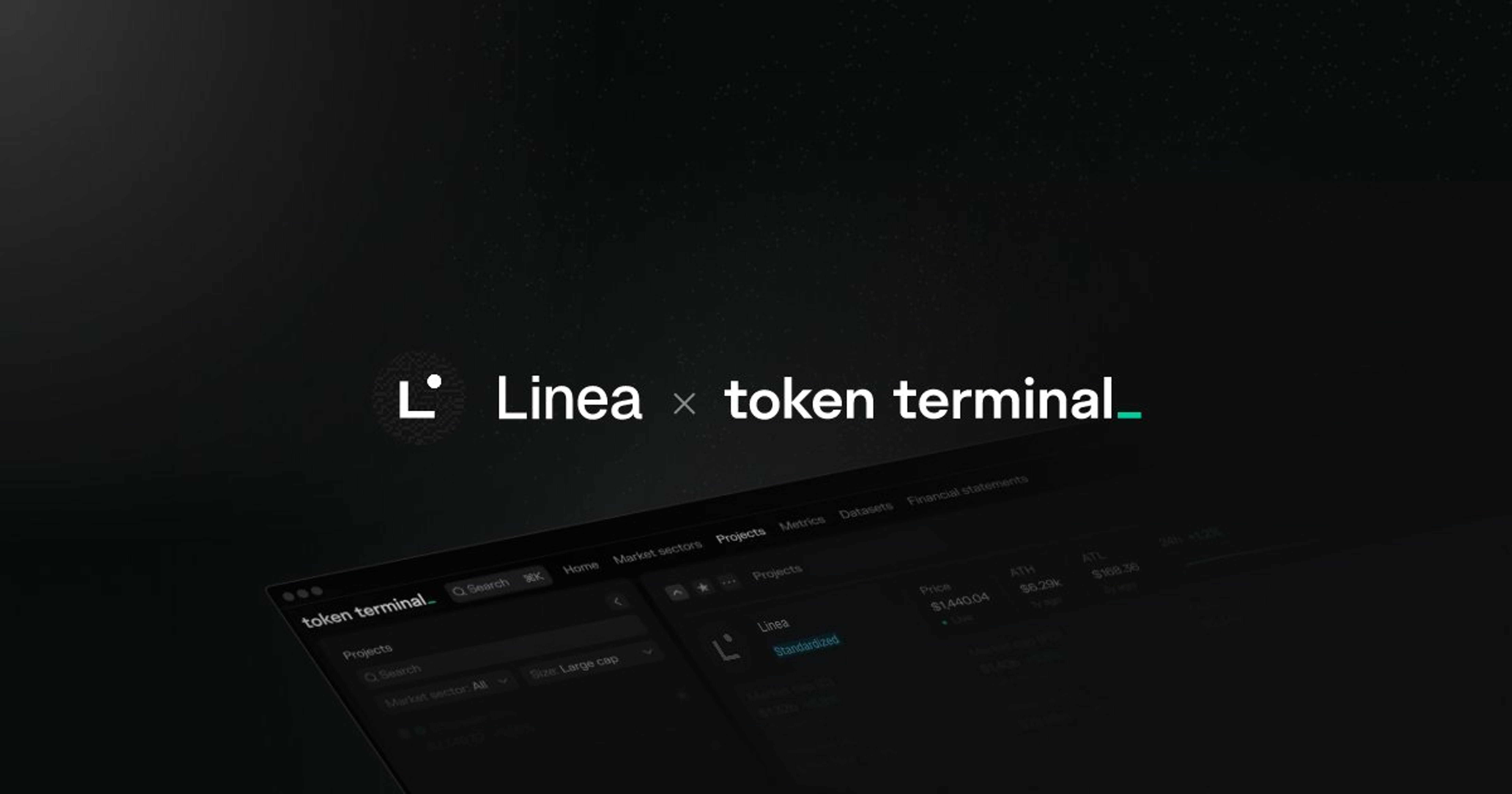Newsletter
Weekly fundamentals – HMX and zkSwap are now listed on Token Terminal!

New listings
HMX – a non-custodial exchange for perpetual contracts built on Arbitrum.
zkSwap Finance – a non-custodial Swap-to-Earn DeFi exchange protocol built on zkSync Era.
DLN – a cross-chain token bridge and trading infrastructure that enables the transfer of assets across blockchains.
Terminal PRO
Data-driven insights from analysts using Token Terminal PRO
Getting to yet another generational buying opportunity for $JOE@TraderJoe_xyz is one of the best-positioned DEXs ATM as the defacto trading hub for Avalanche with exposure to Arbitrum. pic.twitter.com/fB8hb1p0pJ
— Emperor Osmo 🐂 🎯 (@Flowslikeosmo) January 6, 2024
Volume spike: Prediction markets
Prediction markets had on January 7th its biggest day in daily trading volume since March 16th, 2023.
— The Rollup (@therollupco) January 9, 2024
Total trading volume across the top 4 projects went above 2 million.
Graph by @tokenterminal pic.twitter.com/89TDgfvA57
Excerpt from: "The fundamentals of zkSync"
"We’ve seen some L2s gain users due to token incentives and airdrops — which is not the same as organic product/market fit.
Does zkSync fall into this category?
Given that zkSync does not have a token just yet, many users will “farm for airdrops” by bridging assets and engaging with various projects. We can typically identify these “mercenary users” in the cohort data available via Token Terminal Pro.
Let’s have a look at user retention cohorts over the last 10 months:"
"The data here reveals a pretty sticky user base for those onboarded at the beginning of 2023. A quick rundown:
- 281k users onboarded in February with 31% remaining as monthly active users in December.
- 552k users onboarded in March with 30.7% still using zkSync through December.
- 1 million users were onboarded in April with the network retaining 20.7% through year end.
Between 100 and 700k users have been onboarded each month since April. Retention rates are now dropping slightly compared to earlier in 2023, but these are still impressive figures — especially when we consider the competition."
Explore Terminal Pro: https://tokenterminal.com/product/pro
Terminal API
You can find all available API endpoints here: https://docs.tokenterminal.com/reference/api-reference
If you have questions about our API or are interested in obtaining trial access, please reach out to people@tokenterminal.xyz.
Data Room
Handpicked insights from the Token Terminal Data Room
System transactions: Arbitrum vs. OP Stack
What
The share of system transactions within the total transaction count across Arbitrum, OP Mainnet, and Base. System transactions are operational L2 transactions that do not have any associated fees. Examples of system transactions include Arbitrum and OP Mainnet block update transactions.
During Q4, Arbitrum recorded a higher number of transactions compared to OP Mainnet and Base, with respective counts of 29.6m for Arbitrum, 4.0m for OP Mainnet, and 4.1m for Base. A significant portion of Arbitrum's total transactions were system transactions. Specifically, 28.6% of Arbitrum's transactions were system transactions, in contrast to 12.8% for OP Mainnet and 12.0% for Base.
Why
OP Mainnet and Base share a similar architecture and exhibit a similar volume of system transactions. The main reason contributing to a higher proportion of system transactions in Arbitrum is attributed to its shorter block times. System transactions occur with every new block. In Q4, the average block time for Arbitrum was approximately 270ms, whereas for both OP Mainnet and Base, the block times have been set to 2s.
So what
Pure onchain metrics often contain considerable noise, potentially leading to incorrect assumptions. As we see above, solely looking at transaction counts misses part of the picture. Therefore, when analyzing onchain data, it's crucial to understand the nature of transactions and the underlying architecture.
Raw and decoded onchain data from 14 chains, accessible via Google BigQuery. Explore our Data Room offering: https://tokenterminal.com/product/data-room
Changelog
New metrics
- AFPU (Average Fees Per User) is a measurement of how much fees the average user generates.
- AFPU is calculated as fees divided by number of users, sourced from onchain data.
- The metric works as a proxy for the fees generated by one user. It helps us understand user behavior.
- ARPU (Average Revenue Per User) is a measurement of how much revenue the average user generates.
- ARPU is calculated as revenue divided by number of users, sourced from onchain data.
- The metric works as a proxy for the value generated by one user. It helps us understand behavior.
Smart contract labels
Labels make it easier for analysts to understand which market sectors, projects, and contracts drive usage on a blockchain.
- Tron: 1000 new labels
- zkSync Era: 150 new labels
- Manta Pacific: 818 new labels
- Ethereum: 290 new labels
Explore trending contracts: https://tokenterminal.com/terminal/contracts/trending
ICYMI
Fundamentals podcast
Research
Explore the Terminal: https://tokenterminal.com/terminal
The authors of this content, or members, affiliates, or stakeholders of Token Terminal may be participating or are invested in protocols or tokens mentioned herein. The foregoing statement acts as a disclosure of potential conflicts of interest and is not a recommendation to purchase or invest in any token or participate in any protocol. Token Terminal does not recommend any particular course of action in relation to any token or protocol. The content herein is meant purely for educational and informational purposes only, and should not be relied upon as financial, investment, legal, tax or any other professional or other advice. None of the content and information herein is presented to induce or to attempt to induce any reader or other person to buy, sell or hold any token or participate in any protocol or enter into, or offer to enter into, any agreement for or with a view to buying or selling any token or participating in any protocol. Statements made herein (including statements of opinion, if any) are wholly generic and not tailored to take into account the personal needs and unique circumstances of any reader or any other person. Readers are strongly urged to exercise caution and have regard to their own personal needs and circumstances before making any decision to buy or sell any token or participate in any protocol. Observations and views expressed herein may be changed by Token Terminal at any time without notice. Token Terminal accepts no liability whatsoever for any losses or liabilities arising from the use of or reliance on any of this content.
Stay in the loop
Join our mailing list to get the latest insights!
Continue reading

Customer stories: Token Terminal’s Data Partnership with Linea
Through its partnership with Token Terminal, Linea turns transparency into a competitive advantage and continues to build trust with its growing community.

Introducing Tokenized Assets
Token Terminal is expanding its standardized onchain analytics to cover the rapidly growing category of tokenized real-world assets (RWAs) – starting with stablecoins, tokenized funds, and tokenized stocks.

Customer stories: Token Terminal’s Data Partnership with EigenCloud
Through its partnership with Token Terminal, EigenCloud turns transparency into a competitive advantage and continues to build trust with its growing community.